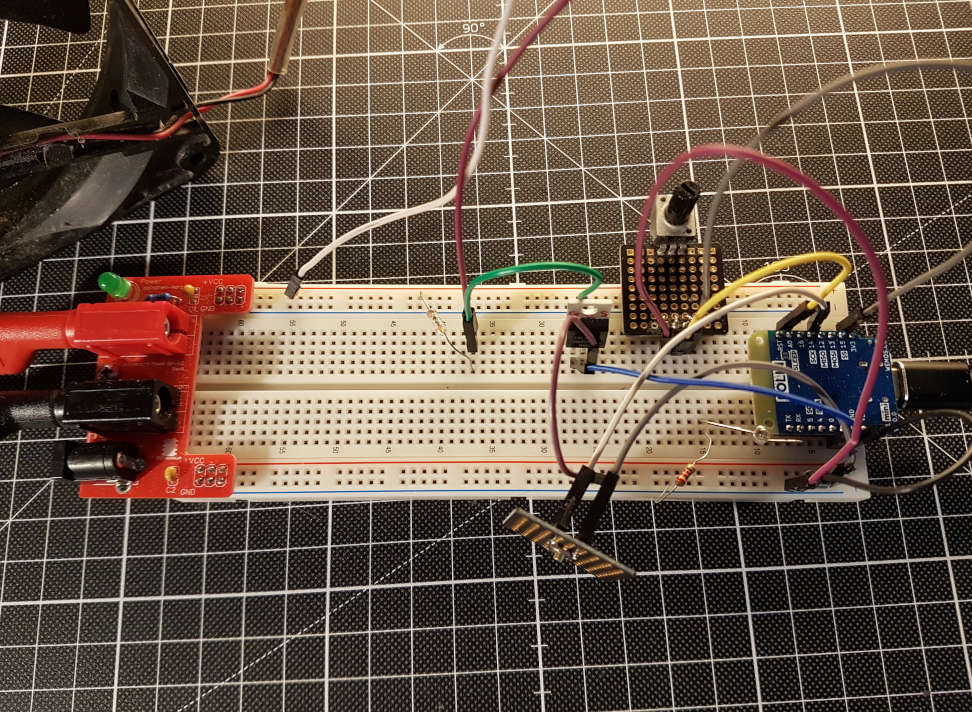Oct. 23 - 2022. (POC Arduino code)
I tested various potential microcontrollers on a breadboard, such as ATtiny85, STM32G031, and a bare board, the ESP8266 D1-mini from Lolin. In these tests, I used an IRL520N n-channel MOSFET. It works for now but has only a maximum drain-source voltage of 16V, which gives us a narrow margin of 4V.
I gave up programming the basic ICs since it was too cumbersome moving cables and ICs around, and the requirement for an external programmer, albeit simple for the ATtiny85.
The ESP8266 has the enormous advantage of updating the firmware with WiFi (OTA). No one will disassemble a project and dig out the controller to be able to hook up to the PC. It also has a 10-bit PWM control and can adjust the PWM frequency above the human ear frequency range.
The downside is that it consumes about ten mA vs. < 5 mA for the bare ICs, without enabled WiFi. However, this is not a massive difference since the fan will draw 150-200 mA. I have now created the first POC code, which works as planned. I have not coded OTA for the ESP8266, but I have already used it for other ESP32 projects.

 Debinix
Debinix
Discussions
Become a Hackaday.io Member
Create an account to leave a comment. Already have an account? Log In.